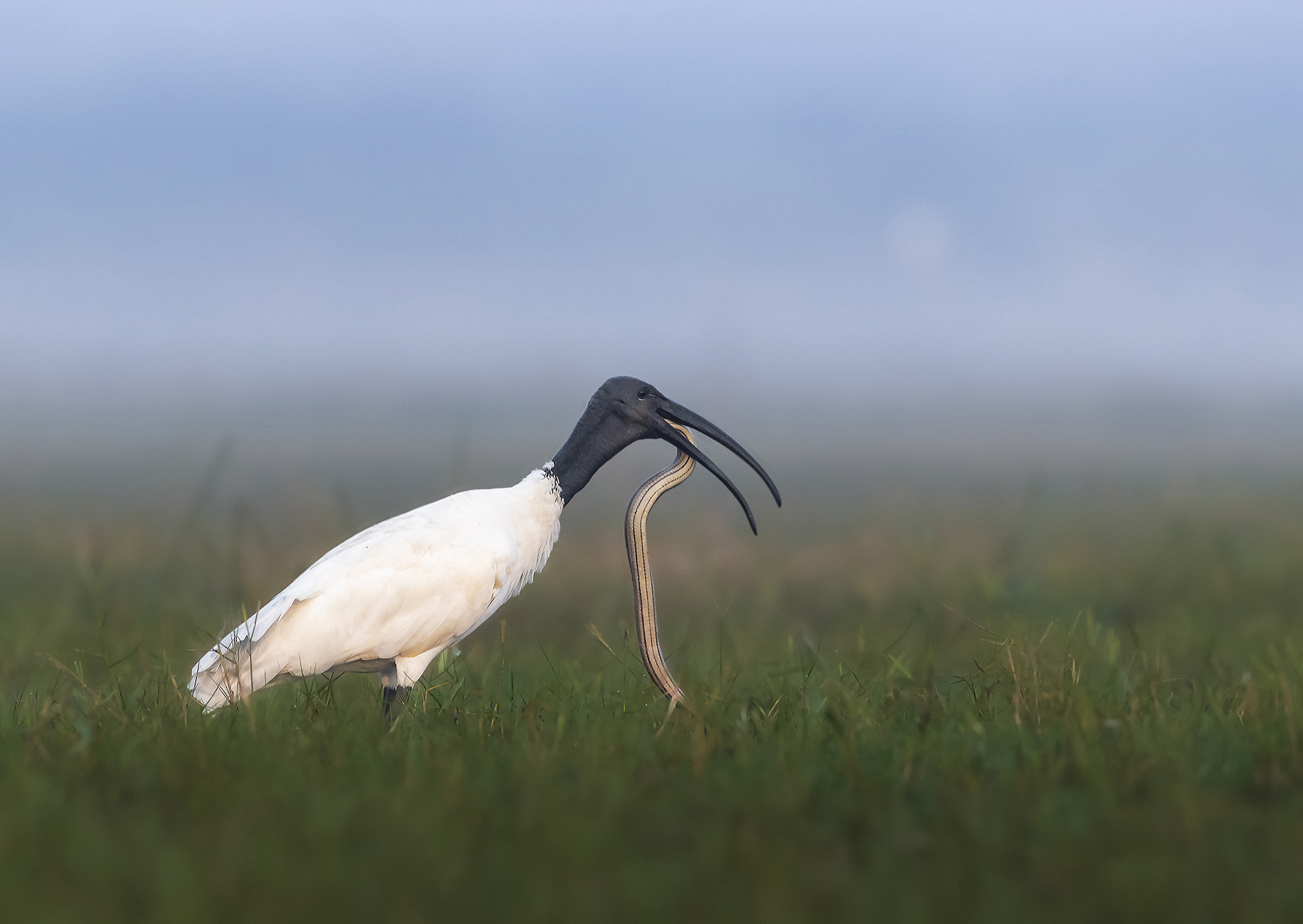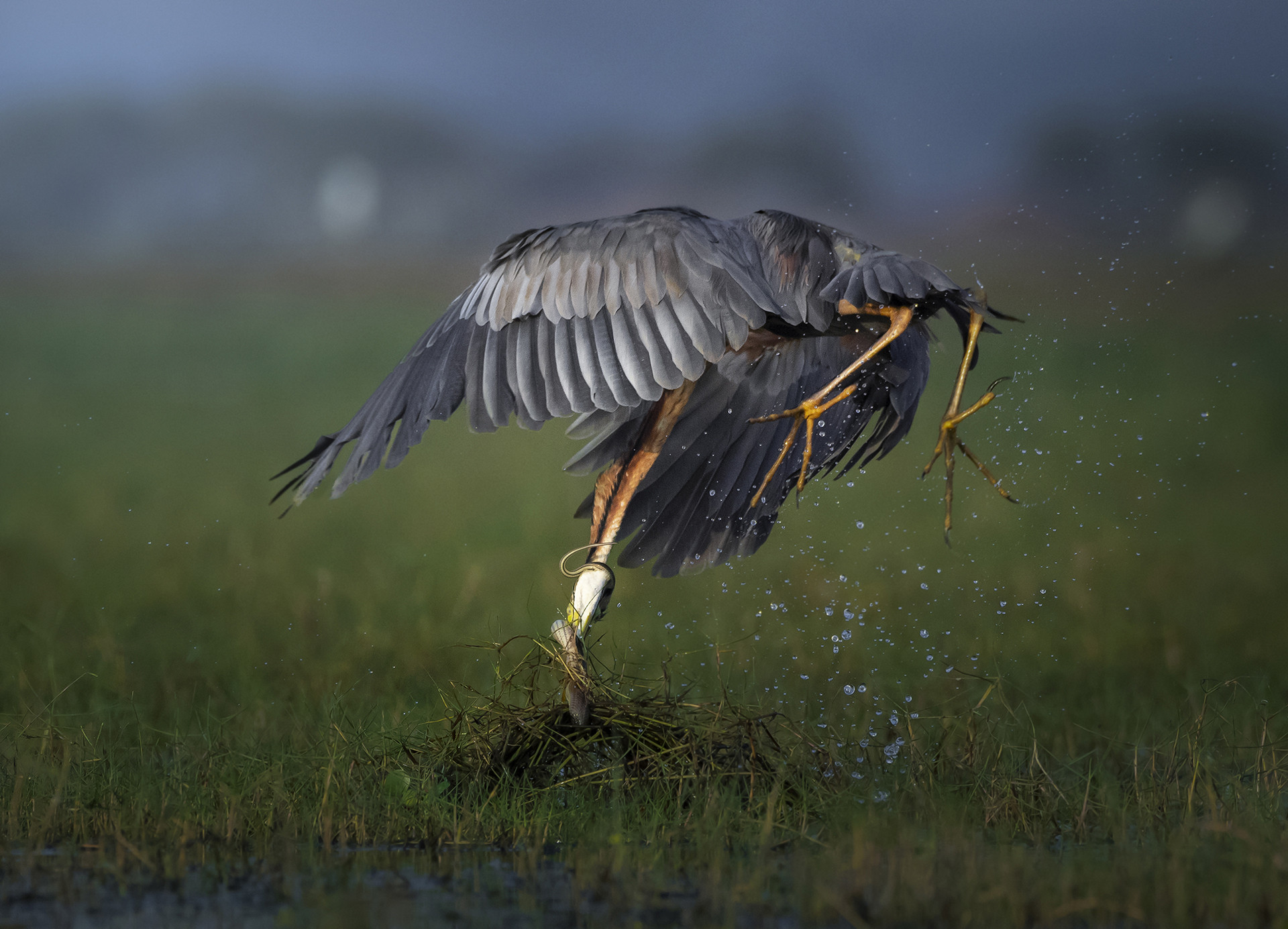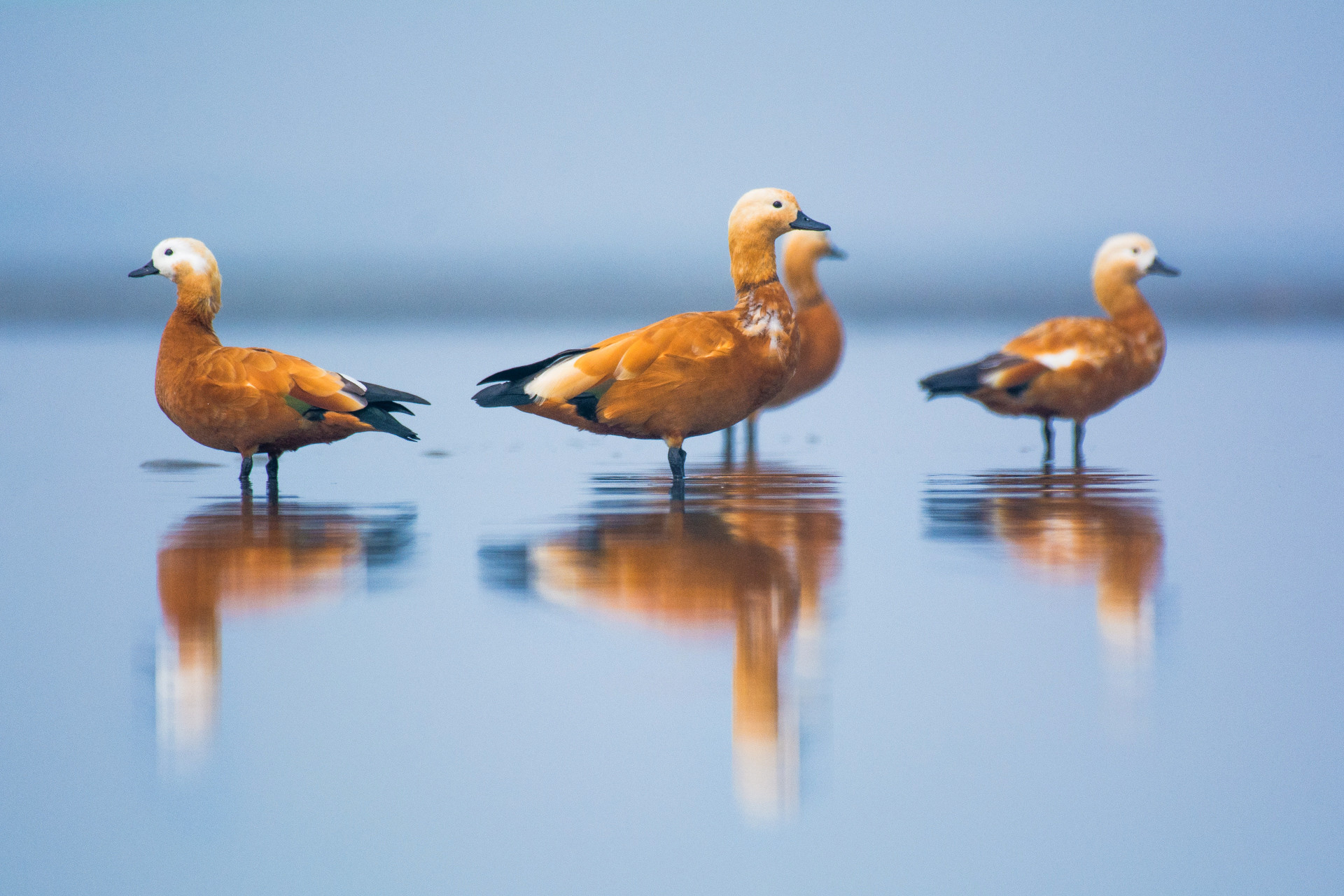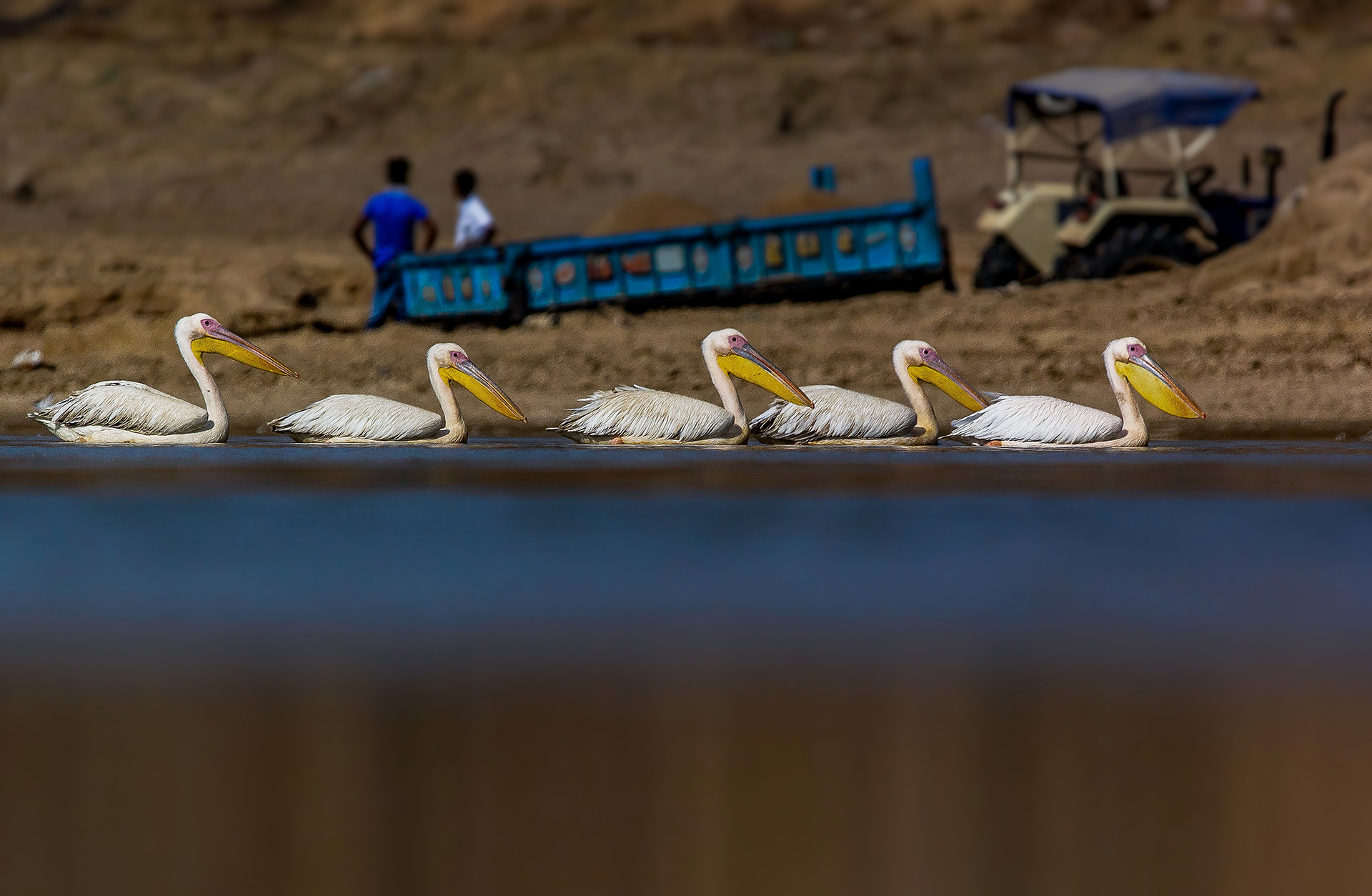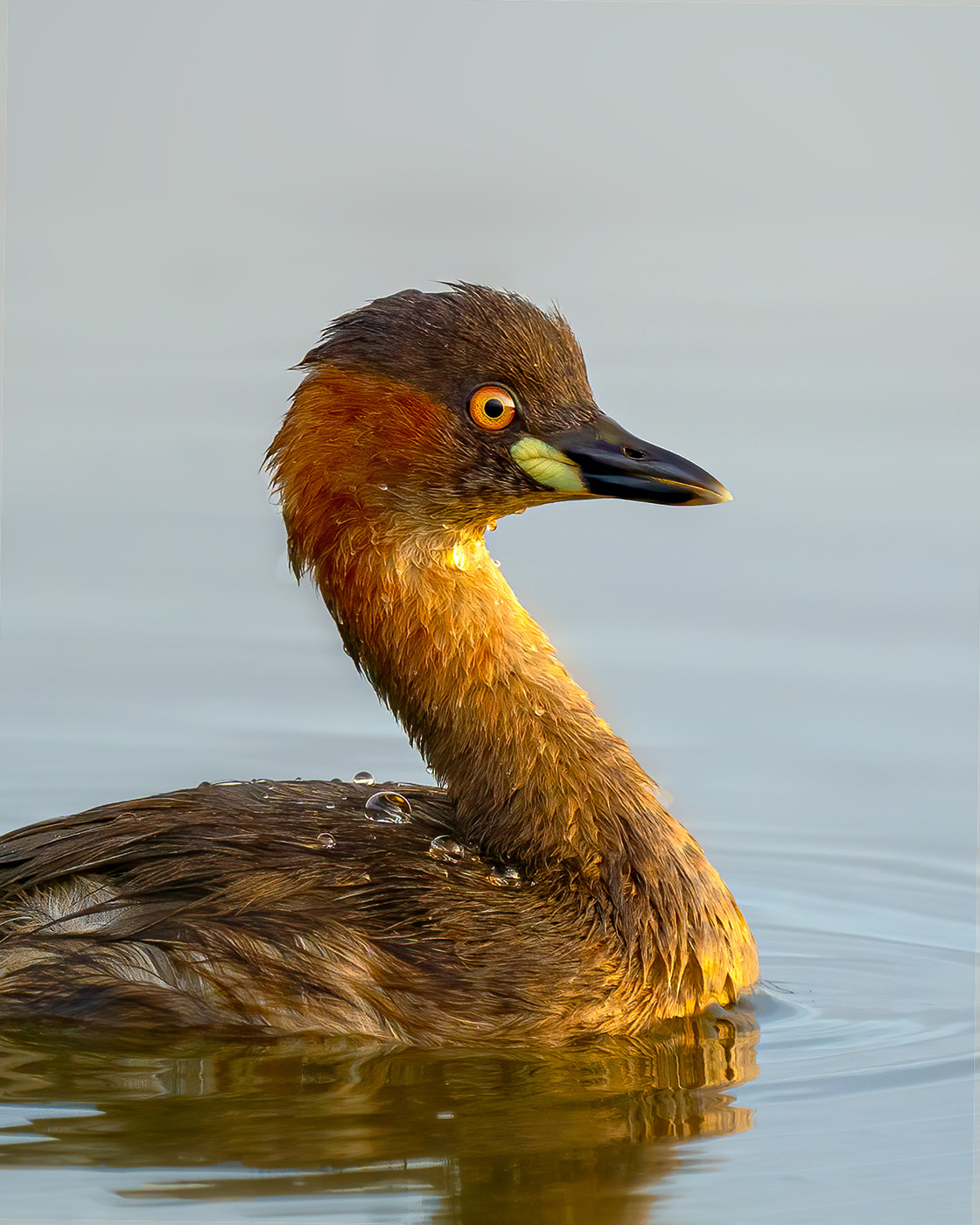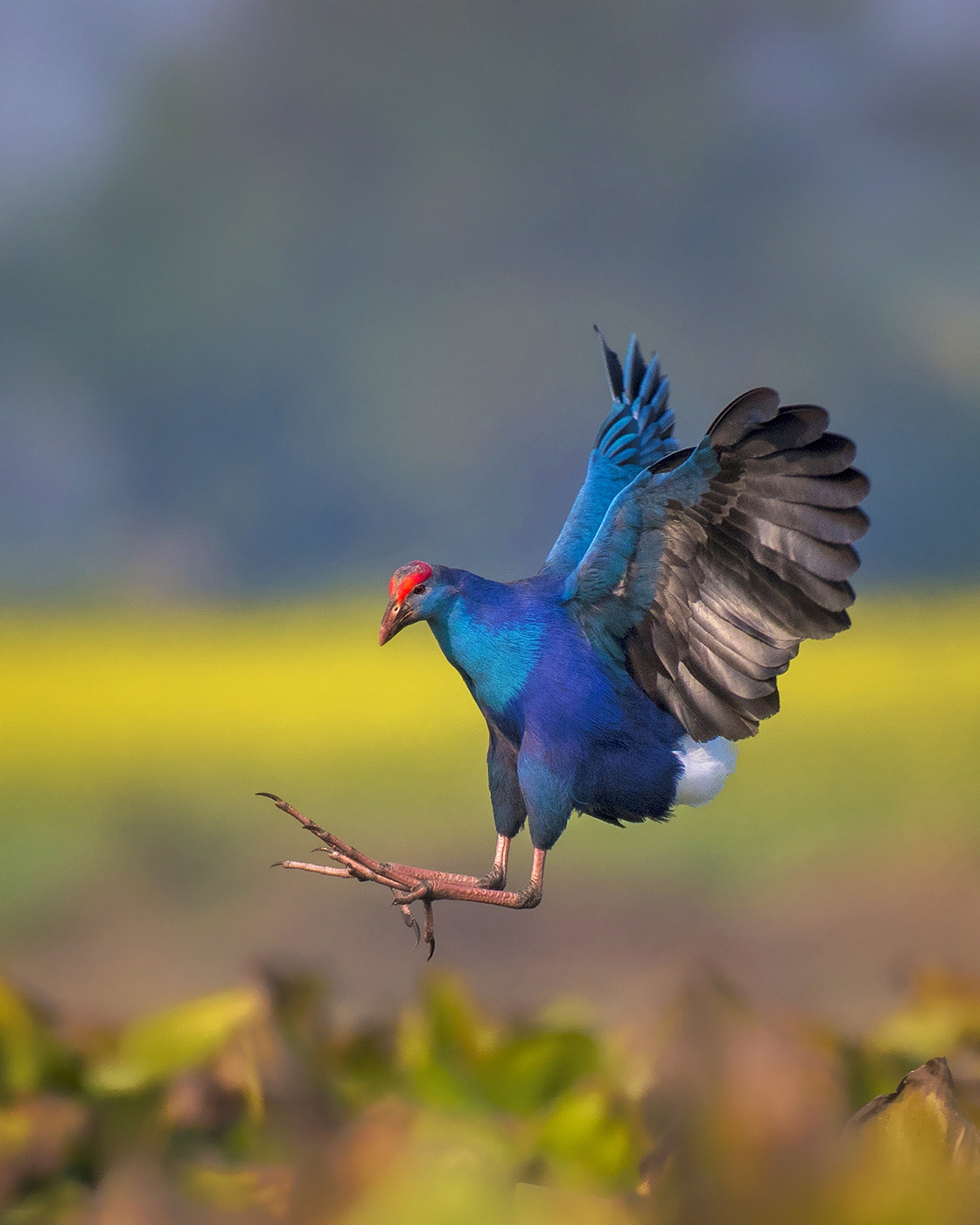"Are there more birds around than usual?"
If there is some upside to the pandemic, that would be people paying more attention to the natural world. Across countries, citizens seem to be noticing the inhabitants of the world around them, especially the winged creatures that greet them outside their windows. A cursory glance at the posts under #BackyardBirdPhotography seems like the only affirmation one needs – that there are indeed more birds around. Sadly, that's not true.
In February this year, State of India's Birds, a comprehensive assessment report on bird species frequently found in the country was presented at the 13th Conference of Parties to the Convention on the Conservation of Migratory Species of Wild Animals (CMS COP 13) held in Gandhinagar, Gujarat. The report showed a 52 per cent decline in the population of about 261 bird species. According to the report, open-country raptors and migratory birds face an alarming level of decline, and the conference emphasised the need to safeguard them.
A crucial part of protecting our birds is protecting the habitats they are dependent on. Did you know that about 12 per cent of the globally threatened bird species depend on wetlands as habitats? India has more than 67,000 wetlands, which are spread over 4.1 million hectares. Many of them are connected to the country’s key rivers and contribute to their health. While wetlands support a diverse range of plants and animals, the birds sure do love them. Lakes, ponds, marshes and swamps are some of the most important types of water bodies for birds. But the wetlands are no longer the haven they once were. Conversion of wetlands to urban construction sites and agricultural land, and pollution of water bodies through industrial and domestic effluents are some of the major factors damaging our wetlands. These activities affect the water quality as well as impact the biodiversity the wetlands support.
To raise awareness about the state of some of our wetlands and gather glimpses of the birds that visit them often, we reached out to our photographer friends asking them to share their favourite moments from these scenic locations. Here’s what they came up with.
Mangalajodi
Tangi, Odisha
Ramesh Karmakar (Wildlife Photographer)
Mangalajodi is a freshwater swamp situated on the banks of Chilika, Asia's largest brackish water lake. The swamp is famous for wintering migratory waterfowls and waders. Mangalajodi also supports a wide variety of fish, amphibians, reptiles and other small invertebrate species. The picturesque congregation of migratory birds is a spectacle that people come to witness from all over the world. Apart from this, Mangalajodi also sustains many of the fisherfolk living in the villages nearby. Previously, hunting was a major issue here. But tourism has played a positive role in the region, and local people partake in conservation activities. Ecotourism has also provided them employment opportunities and given them a modest lifestyle. One issue that continues to remain is excessive fishing.
Seen Often: Northern Pintail, Northern Shoveller, Grey-headed Swamphen, Glossy Ibis, Pheasant-tailed Jacana, Balck-tailed Godwit, Sanderling
Seen Rarely: Australian Stilt
Gajoldoba
Jalpaiguri, West Bengal
Shamik Sanyal (Documentary Filmmaker)
The Gajoldoba wetland is the result of a meander-cutoff of the Teesta River in the Jalpaiguri district. The Teesta Barrage Division manages this beel or lake, and the water level in the lake fluctuates based on the levels in the river. During winters, Gajoldoba experiences high water levels as most of the gates in the barrage remain closed, making it an ideal habitat for migratory birds. Previously, Gajoldoba was a hunting ground, but this has decreased remarkably in recent years. The sudden influx of tourists and birders from around the world has created ample employment opportunities for the local boatmen. Many of them have become guides, and they often provide information on where to spot birds. Don't forget to carry your tripod as you will be photographing while you are on the boat.
Seen Often: Ruddy Shelduck, Red-crested Pochard, Eurasian Wigeon, Northern Lapwing, Bar-Headed Goose, Lesser Whistling Teal, Great Crested Grebe, Black Stork
Seen Rarely: Red-breasted Merganser
Here's a travel guide to help you plan a trip to Gajoldoba.
Pallikaranai
Chennai, Tamil Nadu
Ananth Ramasamy (IT Professional)
A freshwater marsh, Pallikaranai is the only rainwater harvesting wetland in the city of Chennai. The marsh is home to about 115 bird species during the winter season. Sadly, like many marshlands in the country, the Pallikaranai area is subject to intense developmental activities. Construction of IT parks, residential complexes and shopping malls around the wetland has greatly impacted the flow of water and has reduced the marshland to a tenth of its original expanse.
Seen Often: Spot-billed Pelican, Fulvous Whistling Duck, Painted Stork, Indian Spot-billed Duck, Pheasant-tailed Jacana, Common Coot, Common Moorhen, Grey-headed Swamphen
Seen Rarely: Red-necked Falcon, Gadwall, Eurasian Teal
Sarkhej
Ahmedabad, Gujarat
Ravi Patel (Wildlife Photographer)
Sarkhej is situated beside the Sabarmati river in western Ahmedabad. The region became an industrial hub around 1998, and following the construction of several high-rise buildings along the Sarkhej-Gandhinagar highway, a significant portion of its greenery was lost. Treated industrial waste and sewage are discharged into the water, and the mixed water stagnates in a pool as a result of sand mining along the banks of the river. The vegetation that grows in this pool creates a habitat for birds that often visit the region, and some even build nests along this water body. I often try to photograph the birds against the backdrop of these developmental and destructive activities in an attempt to highlight them.
Seen Often: Greater Flamingo and Lesser Flamingo
Seen Rarely: Egyptian Vulture
Bhigwan
Pune, Maharashtra
Daksha Bapat (Wildlife Photographer)
Bhigwan is a small town located near the Pune-Solapur district border. The backwaters of the Ujjani Dam have created a wetland here which is a paradise for ornithophiles. Several species of ducks, herons and egrets are spotted here along with other raptors and waders. Greater Flamingos attract a large number of people who visit Bhigwan just to photograph them. This wetland is a scenic destination, and the sunrise and sunsets here are worth your time. The dry grasslands, woodlands and backwaters of the region also provide an ideal habitat for many species of fish, amphibians, lizards and snakes. Although people living here care for nature and the biodiversity Bhigwan supports, the place fosters a large-scale fishing industry. A large number of birds get caught in these nylon fishing nets and die. We must find ways to protect the birds from these nets or create safer alternatives.
Seen Often: Painted Stork, Glossy Ibis, Osprey, Eurasian Spoonbill, Collared Pratincole, Demoiselle Crane, Greater Flamingo
Seen Rarely: Common Shelduck
Keoladeo National Park
Bharatpur, Rajasthan
Rathika Ramasamy (Wildlife Photographer)
The Keoladeo National Park is home to varying habitats of wetlands and woodlands that support a variety of flora and fauna. Wetlands cover a third of the region and are frequented by more than 370 bird species. No wonder the park is referred to as a bird paradise. Keoladeo National Park is also home to mammals such as the Nilgai, Spotted Deer, Sambar Deer, and several flowering plants, many of which are wetland species. The region provides an excellent opportunity for photographers to observe and photograph birds during various seasons. In summer, one can find the resident birds busy nesting and breeding. During the monsoon, it is a beautiful sight to see the birds come out of their shelters after the rains, spreading their wings to dry themselves. This is definitely a well-maintained bird sanctuary.
Seen Often: Painted Stork, Grey Heron, Greylag Geese, Sarus Crane, Indian Spot-billed Duck, Ruddy Shelduck, Northern Pintail
Seen Rarely: Siberian Crane
Here is a travel guide to help you plan a trip to Keoladeo National Park.
You may also like to read
Hoskote Lake
Bengaluru, Karnataka
Senthil Murugan (Creative Artist & Photographer)
Situated along the Bengaluru-Tirupati Highway, close to the city of Bengaluru, Hoskote Lake is a delight for ornithophiles and bird photographers. A combination of wetland, grassland and shrubland, Hoskote is home to a large number of resident and migrant birds. The best time to visit Hoskote is during the monsoon and winter seasons. If you visit the lake in the early hours, you will find many birds resting around the lake or foraging for food. Hoskote Lake once provided enough water for the local residents and for agricultural purposes around the region. But with the city expanding, the lake is now threatened by developmental activities. One can see a lot of new construction projects cropping up around the lake, including residential complexes. Apart from land encroachment, indiscriminate dumping of plastic waste and glass bottles is also an issue here.
Seen Often: Spot-billed Pelican, Yellow-billed Babbler, Indian Pond Heron, Common Kingfisher, Red Avadavat, Painted Stork
Seen Rarely: White Stork
Nalsarovar Bird Sanctuary
Ahmedabad, Gujarat
Amit Chavan (Doctor)
Nalsarovar is one of the largest wetland bird sanctuaries in the state of Gujarat. Located near Sanand, it spans over 120km and is visited by more than 200 bird species during the winter. Crowds throng the region between November and January to see winter migrants such as flamingos, ducks, coots and pelicans that travel here all the way from parts of Europe and Central Asia. The wetland also supports a wide variety of fauna, including the endangered Wild Ass and the near-threatened Blackbuck. As a freshwater lake, Nalsarovar depends on the annual rainfall for water. In December 2018, the wetland went completely dry as a result of scanty rainfall in the catchment area, which led to birds moving to another lake about 28km away. Be sure to hire one of the bigger boats and opt for longer trips so that you can photograph easily and at your own pace. If you are interested in photographing flamingos, make sure to visit around the end of March.
Seen Often: Common Pochard, Tufted Pochard, Glossy Ibis, Greylag Geese, Yellow-wattled Lapwing, Red-headed Bunting
Seen Rarely: Spotted Crake, Sociable Lapwing
Pangong Tso
Ladakh, Jammu and Kashmir
Shreeram MV (Wildlife Photographer)
Most high-altitude lakes of Ladakh, including Pangong Tso, Tso Moriri and Tso Kar are saltwater lakes. They are spread over vast areas, and their waters and shores harbour good biodiversity. The rampant tourism has had an impact on the biodiversity of the region, especially at Pangong Tso. As the number of footfalls has increased over the past decade (thanks in part to Bollywood), the infrastructure boom has resulted in a large area of the shoreline becoming unviable for nesting birds. Thankfully, the district administration had taken tough measures last summer to restrict tourism.
Seen Often: Black-necked Crane, Bar-headed Geese, Goosander, Brown-headed Gull, Lesser Sand Plover, Brown-headed Gull, Horned Lark
Seen Rarely: Arctic Skua
Magadi Lake
Gadag, Karnataka
Arun SK (Doctor)
Situated in Magadi village, about 350 km from Bengaluru, this saline lake is spread over almost 200 acres. Around 30 species of birds have been documented in this region, and the most important of them is the Bar-headed Goose. Every year, during the month of December, thousands of Bar-headed Geese embark on a long journey from Central Asia during the winter to this tiny village in Karnataka, where they stay till the month of March. The forest department along with the village panchayat has done a wonderful job in implementing conservation activities around the lake. The villagers are especially proud of these birds that visit the Magadi lake every winter, and they have been documenting their arrival for more than two decades now.
Seen Often: Bar-headed Goose, Demoiselle Crane, White-fronted Goose
Seen Rarely: Greater White-fronted Goose
Dhanauri Wetlands
Thrasana, Uttar Pradesh
Pramod CL (Telecom Professional)
Located in Greater Noida's Gautam Budh Nagar, the Dhanauri Wetlands are spread over 101.21 hectares. In December 2019, the process to designate Dhanauri as a Ramsar Site was initiated, emphasising the need for its protection. The lake is an important habitat for a significant population of Sarus Cranes that feed, roost and nest here. There are several farms that surround Dhanauri, and agricultural land has slowly expanded to invade these wetlands. But the farmers here consider the birds a good omen and do not prevent them from feeding on grains. A recent census in the wetland identified more than 6227 water birds spread across 59 species, which is reflective of a healthy ecosystem. Mammals such as jackals and mongooses are also present in Dhanauri. The road connecting to Dhanauri is also used by the resident villagers and their children. Travel in smaller vehicles so that you don’t inconvenience them.
Seen Often: Sarus Crane, Oriental Darter, Painted Stork, Common Pochard, Spotted Redshank, Black-bellied Tern, River Tern
Seen Rarely: Eurasian Bittern
Purbasthali Bird Sanctuary
Purbasthali, West Bengal
Aparupa Dey (Student)
Located approximately 120km away from Kolkata, Purbasthali is an oxbow lake created by the Ganges, that spreads over an area of 3.50 sq.km. A paradise for bird lovers, one can find a wide variety of kingfisher species here throughout the year. Early in the day, the kingfishers are often seen catching fish and frogs and tossing them in the air to eat them head first. Purbasthali is also famous for the many migratory species that come from distant lands. Between 2004 and 2010, researchers have recorded a decrease in the population of almost 14 migratory bird species in Purbasthali.
Sanjay Sen (Teacher & Wildlife Photographer)
As a frequent visitor to Purbasthali for the last six years, I can say that the place has changed with time and has grown to be more than just a wetland for bird watchers. Every year, more than 50 migratory bird species visit Purbasthali. However, last December, the number of birds were a lot lesser than what one would normally expect to see. This is probably down to the increase in human interference in the region, as the area around the lake gets more and more crowded. A personal observation has been that birds are no longer spotted so easily in the open. They hide within the many water hyacinth plants that cover the surface of the lake.
Seen Often: Red-crested Pochard, Bronze-winged Jacana, Stork-billed Kingfisher, Lesser Whistling Duck, Tufted Duck, Ferruginous Duck, Ruddy Shelduck, Northern Pintail, Grey-headed Swamphen
Seen Rarely: Red-necked Grebe, Striated Heron
Here is a travel guide to help you plan a trip to Purbasthali Bird Sanctuary.
The team wishes to thank Shreeram MV and Karthikeyan Srinivasan for their inputs.
